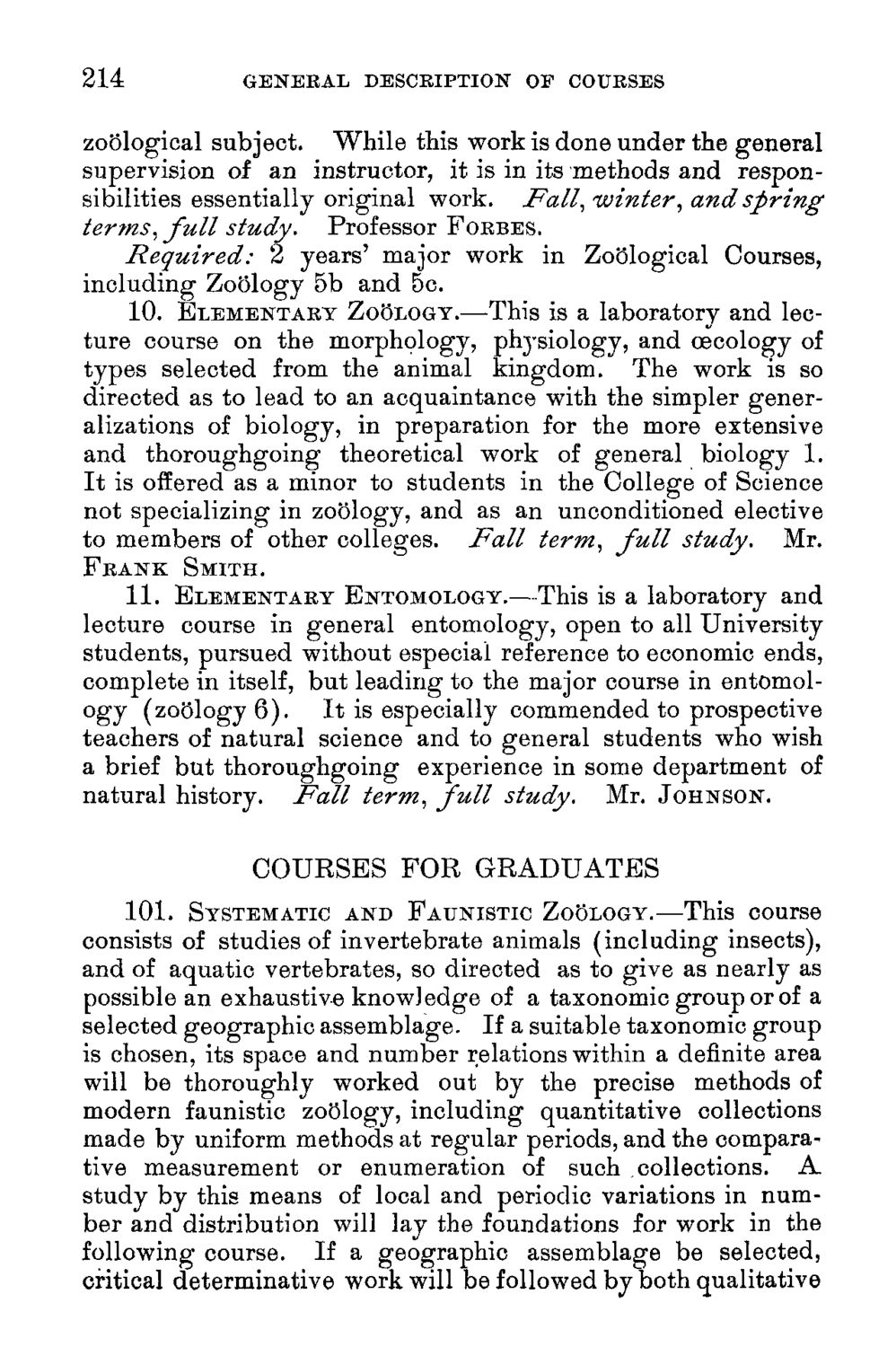| |
| |
Caption: Course Catalog - 1895-1896
This is a reduced-resolution page image for fast online browsing.

EXTRACTED TEXT FROM PAGE:
214 GENERAL DESCRIPTION OF COURSES zoological subject. While this work is done under the general supervision of an instructor, it is in its methods and responsibilities essentially original work. Fall, winter, and spring terms, full study. Professor FORBES. Required: 2 years' major work in Zoological Courses, including Zo5logy 5b and 5c. 10. ELEMENTARY ZOOLOGY.—This is a laboratory and lecture course on the morphology, physiology, and cecology of types selected from the animal kingdom. The work is so directed as to lead to an acquaintance with the simpler generalizations of biology, in preparation for the more extensive and thoroughgoing theoretical work of general biology 1. It is offered as a minor to students in the College of Science not specializing in zoology, and as an unconditioned elective to members of other colleges. Fall term, full study. Mr. is a laboratory and lecture course in general entomology, open to all University students, pursued without especial reference to economic ends, complete in itself, but leading to the major course in entomology (zoology 6). It is especially commended to prospective teachers of natural science and to general students who wish a brief but thoroughgoing experience in some department of natural history. Fall term, full study. Mr. JOHNSON. COURSES FOR GRADUATES 101. SYSTEMATIC AND FAUNISTIC ZOOLOGY.—This course consists of studies of invertebrate animals (including insects), and of aquatic vertebrates, so directed as to give as nearly as possible an exhaustive knowledge of a taxonomic group or of a selected geographic assemblage. If a suitable taxonomic group is chosen, its space and number relations within a definite area will be thoroughly worked out by the precise methods of modern faunistic zoology, including quantitative collections made by uniform methods at regular periods, and the comparative measurement or enumeration of such collections. A study by this means of local and periodic variations in number and distribution will lay the foundations for work in the following course. If a geographic assemblage be selected, critical determinative work will be followed by both qualitative FRANK SMITH. 11. ELEMENTARY ENTOMOLOGY.—This
| |